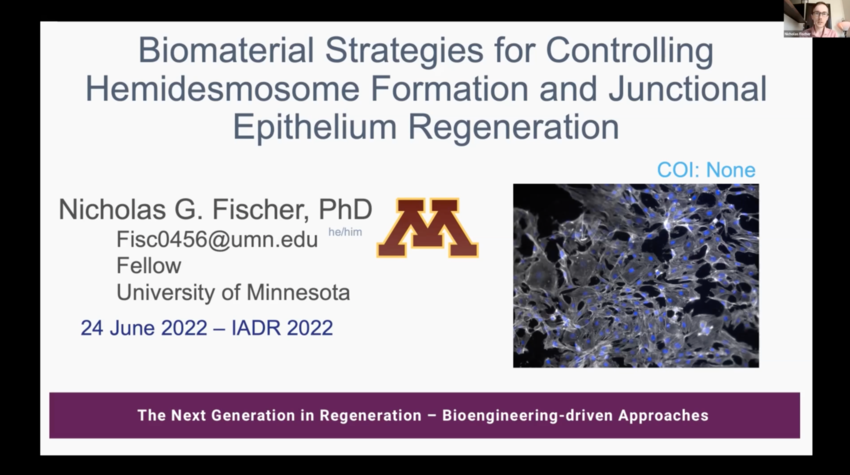Fischer shares his "niche" at international research conference

Nick Fischer, PhD/DDS ’25, is no stranger to breaking barriers and paving the way toward innovation. A science researcher who is pursuing his dental studies at the School of Dentistry, Fischer is part of a small group of young researchers who are passionate about biomaterials.
It came as no surprise, then, when the International Association of Dental Research tapped him as an co-organizer of a symposium for young biomaterial investigators as part of their annual conference.
Fischer was excited to be part of the annual conference and symposium recognizing “the next generation in regeneration,” bringing together the top young investigators in dental materials, biomaterials and bioengineering.
“Typically, our research gets split up into different sessions, so it’s hard to find one session with a lot of cutting-edge work in regeneration,” Fischer explained. “It was exciting to pull all of us together to see the young minds in biomaterials come together and cover both vast geographical areas and different topics in our presentations.”
At the symposium, Fischer had the opportunity to present on his research of using various strategies to initiate soft tissue attachment in dental tools and devices. Because of the niche nature of his research, Fischer used his time to highlight the research that he and other experts have done in the area. “Typically at a symposium, people talk about their own research, but I was interested in the opportunity to share this niche with more people, and share how my work fits into that,” he explained.
Fischer was one of several presenters representing locations across the world including the midwest, Singapore and Saudi Arabia.
In addition to organizing the symposium, Fischer spotlighted his work on hemidesmosome instructive light-cure bio sealants as a method of repairing and regenerating tissue at the greater IADR conference. He was excited to connect with scholars throughout the world in a virtual format, sharing his own research and learning more about others’ work.
The experience was an informative and enriching one for Fischer, who got the chance to review abstracts, network with young researchers and discover research to which he might not have otherwise been exposed.
“I was exposed to work at this conference that I wouldn’t have otherwise seen,” said Fischer. “It was a great experience to share the niche I work in, spotlight myself and my work and get to know research from across the world.”